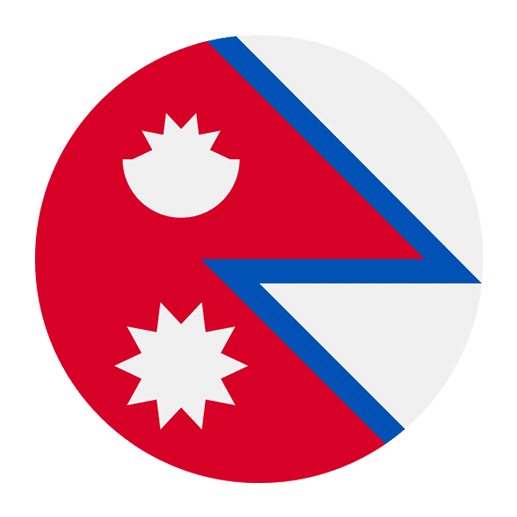Nepal, with its rich cultural heritage and diverse culinary traditions, offers a unique gastronomic experience. For those interested in learning Nepali and immersing themselves in the culture, understanding common cooking utensils is a great start. Cooking is a fundamental part of daily life, and knowing the names and uses of various utensils can help you connect more deeply with the Nepali way of living.
In this article, we’ll explore some of the most common cooking utensils in Nepali kitchens. This knowledge will not only enhance your vocabulary but also give you a glimpse into the culinary practices of Nepal.
Common Cooking Utensils
1. Karai (कडाई)
The Karai, also spelled as ‘Kadhai,’ is a versatile cooking vessel in Nepali kitchens. Similar to a wok, it is primarily used for frying, sautéing, and preparing curries. The Karai is usually made from cast iron or aluminum and has a rounded bottom with two handles on either side. Its shape allows for even heat distribution, making it ideal for cooking a variety of dishes.
2. Dekchi (डेक्ची)
The Dekchi is a deep, round pot used for boiling, steaming, and cooking rice. It usually comes with a lid to keep the steam in, ensuring that the food cooks evenly. Dekchis are made from various materials, including aluminum, stainless steel, and brass. They come in different sizes, depending on the quantity of food being prepared.
3. Tawa (तवा)
A Tawa is a flat, round griddle used for making flatbreads like roti, chapati, and paratha. It is typically made from cast iron or non-stick material, which helps in evenly cooking the bread. The Tawa is an essential utensil in Nepali households, as flatbreads are a staple part of the diet.
4. Jhan (झन)
The Jhan is a perforated ladle used for deep frying. It helps in draining excess oil from fried foods like pakoras, puris, and samosas. The holes in the ladle allow the oil to drip back into the pan, making the food less greasy. Jhan is usually made from stainless steel and is an indispensable tool in Nepali cooking.
5. Khukuri (खुकुरी)
While the Khukuri is traditionally known as a weapon, it is also used in the kitchen for chopping vegetables and meat. The Khukuri has a curved blade, making it effective for slicing through tough ingredients. It is a symbol of Nepalese heritage and is often used in cultural and religious ceremonies.
6. Silauto and Lohoro (सिलौटो र लोहोरो)
The Silauto is a flat stone slab, and the Lohoro is a cylindrical stone used for grinding spices and making pastes. This traditional grinding method is still prevalent in many Nepali households, as it is believed to enhance the flavor of the spices. The Silauto and Lohoro are usually made from granite or other hard stones.
7. Hasiya (हसिया)
The Hasiya is a traditional sickle-shaped knife used for cutting vegetables and herbs. Unlike regular knives, the Hasiya is used by placing it on the ground and pulling the food towards the blade. This technique is particularly useful for cutting leafy greens and other fibrous vegetables.
8. Doko (डोको)
While not a cooking utensil per se, the Doko is a traditional bamboo basket used for carrying and storing food items. It is woven from bamboo strips and is strong enough to carry heavy loads. In rural areas, the Doko is commonly used to transport grains, vegetables, and other produce from the fields to the home.
9. Tandoor (तन्दूर)
The Tandoor is a cylindrical clay oven used for baking and roasting. It is commonly used to make naan, tandoori chicken, and other roasted dishes. The Tandoor is heated with charcoal or wood, which imparts a smoky flavor to the food. While not every household may have a Tandoor, it is a popular feature in many Nepali restaurants.
10. Belan (बेलन)
A Belan is a rolling pin used for flattening dough. It is typically made from wood and is used in conjunction with a flat surface to roll out dough for roti, puri, and other bread. The Belan is an essential tool for anyone looking to master the art of Nepali bread-making.
Cooking Techniques and Utensils
Understanding the utensils is one thing, but knowing how they are used in various cooking techniques can provide a more comprehensive learning experience.
Frying (तल्नु)
Frying is a common cooking technique in Nepali cuisine. The Karai and Jhan are the primary utensils used for this purpose. Whether you are making crispy pakoras or deep-fried samosas, these tools are indispensable. The Karai’s deep and rounded shape allows for a generous amount of oil, while the Jhan helps in draining the excess oil from the fried items.
Boiling and Steaming (उबाल्नु र बाफ)
The Dekchi is the go-to utensil for boiling and steaming. Whether you are cooking rice, making soups, or steaming vegetables, the Dekchi is versatile and efficient. Its deep structure and accompanying lid make it ideal for retaining moisture and ensuring even cooking.
Grinding and Mashing (पिस्नु र मिच्नु)
Traditional Nepali cooking often involves grinding spices and making pastes. The Silauto and Lohoro are perfect for this task. Grinding spices on a stone slab might seem labor-intensive, but it is believed to release the essential oils and enhance the flavor. Similarly, these tools are also used for mashing garlic, ginger, and other ingredients to make a fine paste.
Chopping and Slicing (काट्नु र चिर्नु)
The Khukuri and Hasiya are the primary utensils for chopping and slicing. The Khukuri’s sharp, curved blade makes it suitable for cutting through meat and tough vegetables, while the Hasiya is perfect for slicing leafy greens and herbs. These tools require some skill to use effectively, but they are highly efficient once mastered.
Baking and Roasting (सेक्नु र भुनाउनु)
The Tandoor is the traditional oven used for baking and roasting. It imparts a unique smoky flavor to the food, making dishes like naan and tandoori chicken exceptionally delicious. While modern ovens can also be used, the Tandoor offers an authentic cooking experience that is hard to replicate.
Rolling and Flattening (पेल्नु र पातलो बनाउनु)
The Belan is an essential tool for anyone looking to make Nepali bread. Rolling out dough to the right thickness requires practice, and the Belan is designed to make this task easier. Whether you are making roti, puri, or paratha, a good rolling pin is indispensable.
Learning Nepali Through Cooking
One of the best ways to learn a language is through immersion, and what better way to immerse yourself in Nepali culture than through its food? By familiarizing yourself with these common cooking utensils and their uses, you can gain a deeper understanding of Nepali culinary traditions. Moreover, cooking Nepali dishes can provide a practical and enjoyable way to practice your language skills.
Here are some tips to integrate language learning with cooking:
1. Label Your Utensils
Start by labeling your kitchen utensils with their Nepali names. This will help you remember the vocabulary and associate the words with their corresponding objects. For example, label your frying pan as ‘Karai’ and your rolling pin as ‘Belan.’
2. Follow Nepali Recipes
Try following recipes written in Nepali. This will not only improve your reading skills but also introduce you to new vocabulary related to cooking and ingredients. There are many online resources and cookbooks available that offer Nepali recipes.
3. Watch Cooking Shows
Watching Nepali cooking shows or YouTube channels can be a fun and educational way to learn the language. Pay attention to how the chefs use the utensils and describe the cooking process. This will help you understand the context in which certain words are used.
4. Practice Speaking
If you have Nepali-speaking friends or family, practice speaking with them while cooking. Describe what you are doing using the Nepali terms for the utensils and ingredients. This will help you become more comfortable with the vocabulary and improve your conversational skills.
5. Join a Cooking Class
Consider joining a Nepali cooking class. Many cultural centers and online platforms offer cooking classes that focus on traditional Nepali cuisine. This hands-on experience can be incredibly beneficial for both your cooking and language skills.
Conclusion
Understanding common cooking utensils in Nepali not only enriches your vocabulary but also offers a glimpse into the cultural and culinary practices of Nepal. From the versatile Karai to the traditional Silauto and Lohoro, each utensil has its unique purpose and significance. By integrating these terms into your daily life and practicing through cooking, you can enhance your language learning experience in a fun and practical way.
Whether you are an aspiring chef or simply a language enthusiast, exploring the world of Nepali cooking utensils is a delicious journey worth undertaking. Happy cooking and learning!

